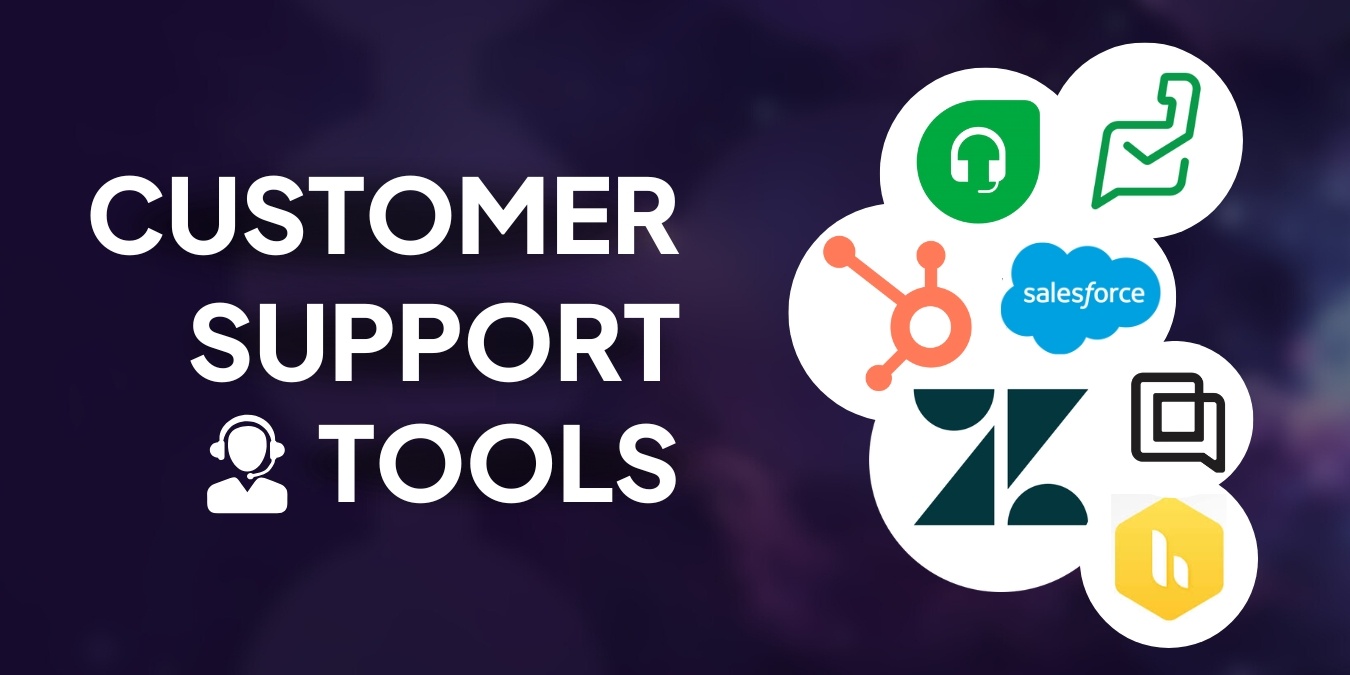Obsah
What Are Low-Code Platforms and Why Are They Important in 2025?
Why Are Low-Code Platforms Popular in 2025?
Key Features of Low-Code Platforms?
The Top 10 Low-Code Platforms in 2025
Key Factors to Consider in Comparing Low-Code Platforms
How to Choose the Right Low-Code Platform for Your Business
Conclusion
Low-code platforms have revolutionized the way organizations approach software development. By dramatically simplifying the application-building process, these platforms enable businesses of all sizes to accelerate their digital initiatives while keeping costs in check. Perhaps most importantly, they empower teams to create sophisticated solutions without extensive programming knowledge.
In this comprehensive guide, we'll explore the leading low-code platforms of 2025, examining their standout capabilities and industry-specific applications. Whether you're a startup seeking cost-effective development tools or an enterprise requiring robust, scalable solutions, you'll discover options tailored to your unique needs.
Let's dive into how these innovative platforms are reshaping the future of business applications!
What Are Low-Code Platforms and Why Are They Important in 2025?
Low-code platforms are tools that simplify application development by using visual interfaces like drag-and-drop builders and prebuilt templates. These platforms empower both developers and non-developers to create applications without needing extensive coding knowledge. They’re revolutionizing how businesses develop software, making the process faster, cheaper, and more accessible.
Why Are Low-Code Platforms Popular in 2025?
The demand for low-code platforms has surged due to:
- Faster Development: Applications can be created up to 10x faster.
- Cost Savings: Reduces reliance on large developer teams.
- Empowering Citizen Developers: Non-technical users can build apps.
- Scalability: Suitable for simple tools or complex enterprise solutions.
Key Features of Low-Code Platforms
- Visual Development: Drag-and-drop tools for building apps easily.
- Prebuilt Templates: Quick-start solutions for common app types.
- Integration Capabilities: Easy connection with existing tools and APIs.
- AI Integration: Automation and advanced features powered by AI.
Benefits of Low-Code Platforms
- Speed: Faster delivery of applications means quicker responses to market demands.
- Collaboration: IT and business teams can work together seamlessly.
- Flexibility: Easy to modify apps as business needs evolve.
- Accessibility: Broadens innovation by enabling non-technical staff to contribute.
The Top 10 Low-Code Platforms in 2025
- Overview: Known for its enterprise-grade capabilities, OutSystems leads the market with its robust development tools and scalability.
- Key Features:
- AI-powered application generation.
- Advanced process automation.
- Built-in security and compliance tools.
- Best For: Enterprises requiring complex and scalable apps.
- Why It Stands Out: Offers unmatched flexibility for creating enterprise-grade applications while keeping user experience simple
- Overview: A top choice for collaboration and multi-cloud support, Mendix excels in team-based application development.
- Key Features:
- Visual modeling tools.
- Multi-cloud deployment options.
- AI-powered recommendations during app building.
- Best For: Enterprises and collaborative projects.
- Why It Stands Out: Offers robust features for team-based development while supporting rapid innovation.
Microsoft Power Apps
- Overview: Part of the Microsoft ecosystem, Power Apps integrates seamlessly with tools like Office 365 and Teams.
- Key Features:
- Drag-and-drop development.
- Prebuilt templates for quick deployment.
- Strong integration with Microsoft products.
- Best For: Businesses already using Microsoft tools.
- Why It Stands Out: Ideal for organizations heavily invested in the Microsoft ecosystem.
- Overview: Appian is a leader in workflow automation, making it perfect for businesses with complex processes.
- Key Features:
- Workflow and process automation.
- AI and machine learning capabilities.
- High-security standards.
- Best For: Workflow-heavy industries like finance and healthcare.
- Why It Stands Out: Combines automation with low-code for advanced process management.
- Overview: A budget-friendly platform designed for small businesses.
- Key Features:
- Prebuilt apps for common business processes.
- Easy integrations within the Zoho ecosystem.
- Affordable pricing plans.
- Best For: Startups and small businesses.
- Why It Stands Out: Its affordability and simplicity make it ideal for businesses with limited budgets.
Appsmith
- Overview: An open-source low-code platform designed for building internal tools.
- Key Features:
- Customizable widgets.
- Active community support.
- Free and open-source.
- Best For: Startups and tech-savvy teams.
- Why It Stands Out: Offers a cost-effective solution for internal tools with a vibrant developer community.
Bubble
- Overview: Bubble is a user-friendly platform for creating web applications without code.
- Key Features:
- Drag-and-drop editor.
- Responsive design tools.
- Scalable for small and mid-sized businesses.
- Best For: Web applications for startups and small teams.
- Why It Stands Out: Simplifies web development for non-technical users.
ToolJet
- Overview: A free, open-source platform with enterprise-ready features.
- Key Features:
- Integration with popular databases and APIs.
- Easy-to-use interface.
- Active community and enterprise support.
- Best For: Teams needing a flexible, open-source option.
- Why It Stands Out: Balances flexibility, cost-effectiveness, and ease of use.
- Overview: Built within Salesforce’s CRM ecosystem, this platform is perfect for customer-centric applications.
- Key Features:
- Drag-and-drop app builder.
- AI-driven automation tools.
- Prebuilt CRM integrations.
- Best For: Businesses heavily reliant on CRM systems.
- Why It Stands Out: Offers seamless integration with Salesforce’s tools.
- Overview: A platform designed to empower citizen developers with easy-to-use tools.
- Key Features:
- Drag-and-drop builder.
- Built-in templates for common applications.
- Great support for non-technical users.
- Best For: Organizations encouraging non-developers to innovate.
- Why It Stands Out: Encourages innovation across teams by enabling anyone to build apps.
Comparison Table: Best Low-Code Platforms in 2025
Key Factors to Consider in Comparing Low-Code Platforms
When choosing a low-code platform, businesses and developers should evaluate the following factors:
- Ease of Use – Is the platform beginner-friendly, or does it require technical expertise?
- Scalability – Can the platform handle enterprise-scale applications?
- Customization & Flexibility – How much control do developers have over app functionalities?
- Integration Capabilities – Does the platform easily connect with third-party tools and databases?
- Pricing & Cost Efficiency – Is it affordable for small businesses, or does it cater to large enterprises?
- Security & Compliance – Does it offer features to ensure data security and regulatory compliance?
- AI & Automation Features – How well does the platform leverage artificial intelligence and workflow automation?
How to Choose the Right Low-Code Platform for Your Business
Before selecting a concrete platform, consider these key questions:
What type of application are you building?- Internal business tools? → Appsmith or ToolJet
- Web apps? → Bubble
- CRM-based apps? → Salesforce Lightning
- Enterprise solutions? → OutSystems or Mendix
- Low-cost: Zoho Creator, Bubble, Appsmith (free/open-source)
- Enterprise-level: OutSystems, Appian, Mendix (premium pricing)
- Yes → OutSystems, Mendix, Appian, Microsoft Power Apps
- No → Bubble, ToolJet, Zoho Creator
What level of customization do you need?
Highly customizable: OutSystems, Appsmith, ToolJet
Less flexible but easier to use: Betty Blocks, Zoho Creator, Salesforce Lightning
Conclusion
Low-code platforms dramatically reduce development time and costs while making application creation accessible to both technical and non-technical teams. From startups leveraging agile solutions like Zoho Creator to enterprises implementing comprehensive platforms like OutSystems, or teams seeking flexibility through open-source alternatives like Appsmith – there's an ideal solution for every organization.
The key to success lies in choosing a platform that aligns with your specific needs, focusing on crucial aspects like scalability, seamless integrations, and AI-enhanced automation capabilities. As we move forward, low-code development continues to reshape the software landscape, democratizing application development and accelerating digital innovation across industries.
Not sure how to choose the right platform? Contact us and our experts will help you find the perfect solution for your business!
Topics: Grow online

















